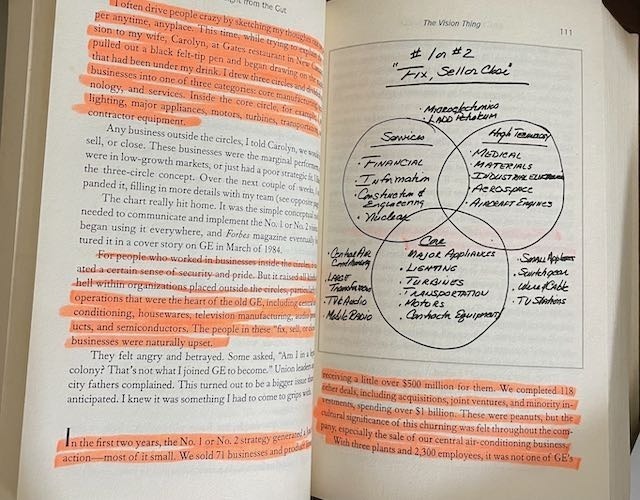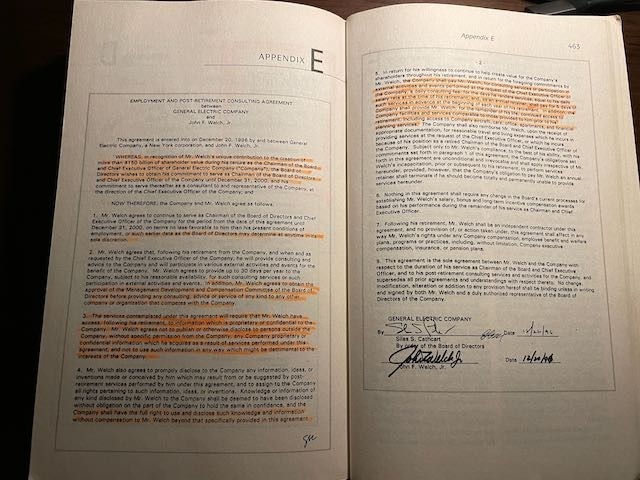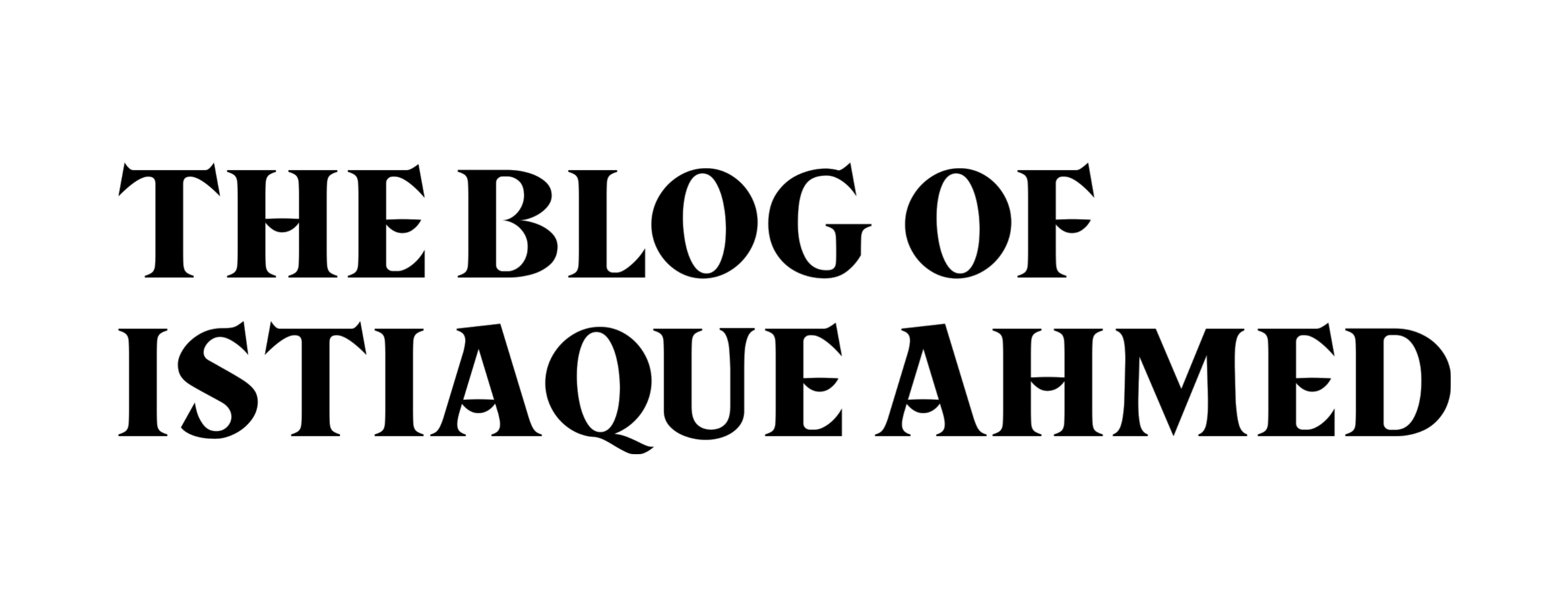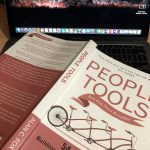Being a CEO is nuts! A whole jumble of thoughts come to mind: Over Thing Is All About Over the top. Wild. Fun. Outrageous. Crazy. Passion. Perpetual motion. The give-and-take. Meetings into the night. Incredible friendships. Fine wine. Celebrations. Great golf courses. Big decisions in the real game. Crises and pressure. Lots of swings. A few home runs. The thrill of winning. The pain of losing. It’s as good as it gets! You get paid a lot, but the real payoff is in fun. Like any job, though, it has its pluses and minuses, but the good sure overwhelms the bad. The schedule is packed, with many hours blocked out a year in advance, yet every day manages to bring new crises that butcher your calendar. The days are crazy long, yet the hours’ race by because you’re always fighting for more time. The job never leaves you, no matter what you’re doing. What’s on your mind is always so absorbing.
Yes, this is what exactly was written by Jack Welch in his book STRAIGHT FROM THE GUT. Jack served General Electronic (GE) for 21 years as Chairman and CEO, where he created a value of more than US$ 150 billion for shareholders in the first 15 years. He spent 41 years in the company as an employee. When he retired from GE he received a severance payment of $417 million, the largest such payment in business history.
One of the corporate leaders of Bangladesh recommended me this book to read and said he read this book almost 20 years back, which helped him a lot in his career. Straight from the Gut, one of the best books in the world about corporations he does believe, so I am.
I found Jack Welch a fantastic storyteller. He told about his GE days. He told about his ups and downs, success, failures, and learnings in GE. I felt I was reading the journal of Jack Welch.
“Every day, of course, wasn’t this hectic. There’s no perfect formula, this CEO thing. Everyone does it differently, and there’s no right or
wrong way to go about it. I certainly don’t have a magic formula, but since I was presumptuous enough to write this book, I’ll take a shot at sharing some of the ideas that worked for me. I hope some might be helpful. Pick and choose among them, or just them all. ” – Jack Welch.
I am presenting my key takeaways from this great CEO’s guts [Thoughts, perception, and ideas]. I put Jack’s thoughts, ideas, and beliefs here the way he expressed.
Integrity: A freshman at a Fairfield University Business School forum recently asked me, “How can you be a good Catholic and a businessman at the same time?” I answered emphatically. The simple answer is; by maintaining integrity. Establishing it and never wavering from it supported everything I did through good and bad times. People may not have agreed with me on every issue- -and I may not have been right all the time -but they always knew they were getting it straight and honest. It helped to build better relationships with customers, suppliers, analysts, competitors, and governments. It set the tone in the organization. I never had two agendas. There was only one way. -the straightway.
The Corporation and the Community: I believe social responsibility begins with a strong, competitive company. Only a healthy enterprise can improve and enrich the lives of people and their communities. Weak and struggling companies, on the other hand, are often community liabilities. That’s why a CEO’s primary social responsibility is to assure the financial success of the company. Only a healthy, l winning company has the resources and the capability to do the right thing.

Setting a Tone: The organization takes its cue from the person on top. I always told our business leaders that their personal intensity determined their Organizations intensity. How hard they worked and how many people they touched would be emulated thousands of times over.
The CEO sets the tone. Every day, I tried to get into the skin of every person in the place. I wanted them to feel my presence. I didn’t want to be a picture in the annual report. I wanted to be someone whom everyone in GE knew.
Maximizing an Organisation’s Intellect: Getting every employee’s mind into the game is a huge part of What the CEO job is all about. Taking everyone’s best ideas and transferring them to others is the secret. There’s nothing more important. I tried to be a sponge, absorbing and questioning every good idea. The first step is being open to the best of what every- one, everywhere, has to offer. The second is transferring that learning across the organization.
People First, Strategy Second: Service was always a second-class citizen until we put leaders in place who dared to “kick-ass and break glass”. We learned the hard way that we could have the most effective strategies in the world. Without the right leaders developing and owning them, we’d get stunning presentations and so-so results.
Informality: Bureaucracy strangles. Informality liberates.
Self-Confidence: Arrogance is a killer, and wearing ambition on one’s sleeve can have the same effect. There is a fine line between arrogance and self-confidence. Legitimate self-confidence is a winner. The true test of self-confidence is the courage to be open- to welcome change and new ideas regardless of their source. Self-confident people aren’t afraid to have their views challenged. They relish the intellectual combat that enriches ideas. They determine the ultimate openness of an organization and its ability to learn. How do you find them? By seeking out people who are comfortable in their own skin, people like who they are and are never afraid to show it. Don’t ever compromise “being you” for any damn job in any institution.
Passion: Great organization can ignite passion.
Stretch: Stretch is reaching for more than what you thought possible. In a stretch environment, the same field team is asked to come in with “operating plans” that reflect their dreams the highest numbers they think they had a shot at their “stretch.” The discussion revolves around new directions and growth, energizing stuff.
Celebration: Business has to be fun. For too many people, it’s “just a job.” I always found celebrations were a great way to energize an organization, From my first days in plastics, I was always looking for ways to celebrate even the smallest victories.
Aligning Rewards with Measurements: I always pounded home the question, “Are we measuring and rewarding the specific behaviour we want?” By not aligning measurements and rewards, you often get what you’re not looking for.

Differentiation Develops Great Organizations: I thought it was the key to building a great organization from my first days. For us, the vitality curve made differentiation work. We used it relentlessly to push leaders to upgrade their teams continually.
Owning the People: Our business CEOs knew they would be rewarded for teeing up high potentials. Our boundary-less culture changed the game from hoarding your best people to sharing your best.
Appraisals All the Time: Appraisals to me were like breathing. In a meritocracy, nothing is more important. I was always giving appraisals whether I handed out a stock option grant or gave a raise-Or even when I’d bump into someone in the hallway. I always wanted everyone to know where they stood. Every year, I’d send a handwritten note with the annual bonus to my direct reports. I’d write two to three pages outlining what I was looking for in the coming year. I’d attach the prior year’s letter to it, which I would mark up in red to provide continuity to the process. These notes did a couple of things. I had the chance to reflect on each business and what I thought was important. My direct reports realized that there would be follow-up and that I cared a lot.
Culture Counts: An organization that truly believes in maximizing intellect can’t have multiple cultures.
Strategy: Business success is less a function of grandiose predictions than a result of being able to respond rapidly to real changes as they
occur. That’s why strategy has to be dynamic and anticipatory. Five simple questions brought strategic thinking to life for me:
(1) What is the detailed global position of your business and that of your competitors: market shares, strengths by product line, and by region today?
(2) What actions have your competitors taken in the past two years that have changed the competitive landscape?
(3) What have you done in the last two years to alter that landscape?
(4) What are you most afraid your competitors might do in the next two years to change the landscape?
(5) What are you going to do in the next two years to leapfrog any of their moves?
Competitors: The absolute truth was that a competitor had a better cost position or a strategic rationale for what it did. It took me a while to figure out that I should have been asking, “What was wrong with us, not them?”. The other beauty goes something like this: A team comes in with a proposal to leapfrog the current position of its leading competitor. The implicit assumption is that the competition will be sleeping while we’re developing the new product. Doesn’t usually happen that way. Never underestimate the other guy.
The Field: I never really felt headquarters was the place to be, and becoming CEO reinforced my point of view. From my first job as an
officer in February 1972, I wanted to be out with the people who really made things happen. I’d spend at least a third of my time with the GE businesses. I have no idea how much time CEOs should spend in the field. I do know I fought every day to get my butt out of the office. I constantly reminded myself: Headquarters doesn’t make anything or sell anything. Banging around the field was my best shot at getting some idea about what was really going on.
Market vs Mind-Sets: Market are not mature. Sometimes minds are. Nowhere was that more true than our pursuit with the almost religious fervour of a No. 1 or 2, fix, sell, or close strategy. Looking at the same business from a different share perspective changed our mindset. When we asked each business to redefine its market so they could have no more than a 10 per cent share, what had looked like mature markets became growth opportunities. Even a few field horses started looking like thoroughbreds. With the same portfolio businesses, our revenue growth rate more than doubled in the last half of the 1990s.
Initiatives vs Tactics: In 20 years, we really had only four initiatives — Globalization, Services, Six Sigma, and E-business. Initiatives live forever. They create fundamental change in a company. They build on one another. Everything in the GE operating system reinforces them.
On the other hand, short-term tactical moves are needed to revitalize and energize a function or company. Here are three examples. We upgraded sourcing leadership and globalized suppliers. That saved millions. We reduced foreign service employees (FSE) by bringing U.S. expatriates home. That saved millions by forcing the businesses to promote local nationals and put a global face on the company. We reduced internal travel, using the Internet. That saved millions and addressed the work/life balance issue. Our people got fewer Frequent Flyer miles but stayed home and had better lives. Understanding the difference between the fundamental and the quick fix helps an organization stay focused.
The Communicator: Whenever I had an idea or message I wanted to drive into the organization, I could never say it enough. I repeated it over and over and over, at every meeting and review, for years, until I could almost gag on the words. I always felt I had to be “over the top to get hundreds of thousands of people behind an idea. My behaviour was often excessive and perhaps obsessive. I don’t know if that’s the only way, but it worked for me.
Employee Survey: We used all kinds of ways to get employee feedback. We didn’t ask about the quality of cafeteria food or the benefit plans. We asked questions that got at fundamental issues around the theme: “Is the company you read about in the annual report the company you work for?”
Upgrading a Function: Once we had highly energized leaders in place, ideas flowed like water downhill to the rest of the company.
The Advertising Manager: I never allowed one advertisement on the air that I didn’t like.
Managing Loose, Managing Tight: I loved to go on the field when I thought I could play, and I loved cheering from the sidelines when I didn’t think I belonged in the game.
Chart Maker: In December of 2000, I was probably the only 65-year-old guy still drawing business charts for analyst presentations. I’ve always thought that chart-making clarified my thinking better than anything else. Reducing a complex problem to a simple chart excited the hell out of me. For every analyst meeting, I’d sit for hours with my finance and investor relations teams, sketching out and tearing up chart after chart. I loved doing charts and got So much out of them. The crazy thing about it was that we always felt the last presentation was our “best one ever”.
Investor Relations: Wall Street is a big part of the job. We changed whom we put into investor relations. We always had good people, but the old model was a career-ending job for financial types. They were generally at headquarters, expected to respond passively to questions from analysts and investors. The model changed in the late 1980s when we picked young high-potential financial managers with a marketing sense. Each one of them became the chief marketing officer for GE stock, constantly on the road visiting investors and selling the GE story. The job went from defensive linebacker to offensive halfback. All those who held the job got up every morning and felt the price of GE stock measured them. Already on a fast track because of their financial acumen, they used the job to improve their sales and presentation skills.
Wallowing: It was all about breaking down the concept of hierarchy. Everyone knew they were equal partners at the table, where their ideas could be thrown out with informality and candour.
Your Back Room Is Somebody Else’s Front Room: We practiced it. Don’t own a cafeteria: Let a food company do it. Don’t run a print shop: Let a printing company do that. It understands where your real value added is and puts your best people and resources behind that. Back rooms, by definition, will never be able to attract your best. We converted ours into someone else’s front room and insisted on getting their best. That worked for us so many times. This is what outsourcing is all about.
Speed: I could scarcely remember a time when I said, “I wish I’d taken six more months to study something before making a decision. I think acting decisively on people, plants, and investments were one reason I got out of the pile very early at GE. Yet 40 years later, when I retired, one of my great regrets was that I didn’t act fast enough on many occasions. When I asked myself, How many times should I have held off on a decision? Versus How many times do I wish I’d made that move faster? I inevitably found that the latter won almost every time.
Forget the Zero: The entrepreneurial benefits of being small, agility, speed, and ease of communication are often lost in a big company. We were aware of what size meant. The worst thing a company can do with the size is to focus on “managing” it. Size either liberates or paralyzes. We tried every day to remember that the benefit of size allowed us to take more swings.
Just some thoughts— things that worked for me, along with a lot of luck. It’s not that I have never been superstitious. I just never wanted to push my luck.
-Jack Welch





